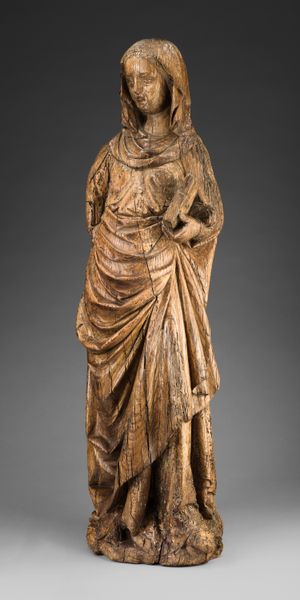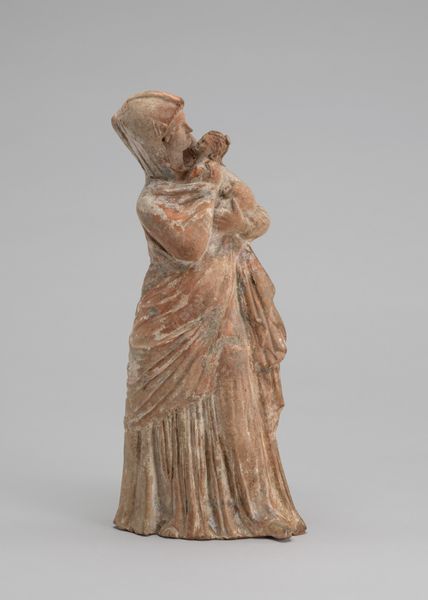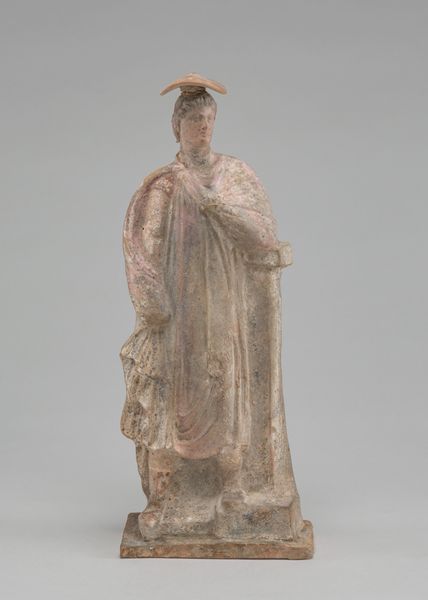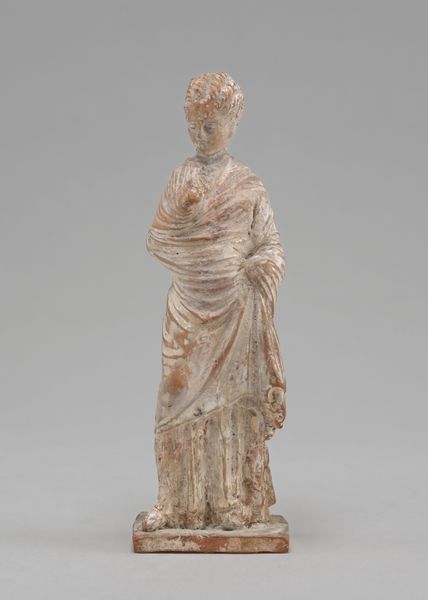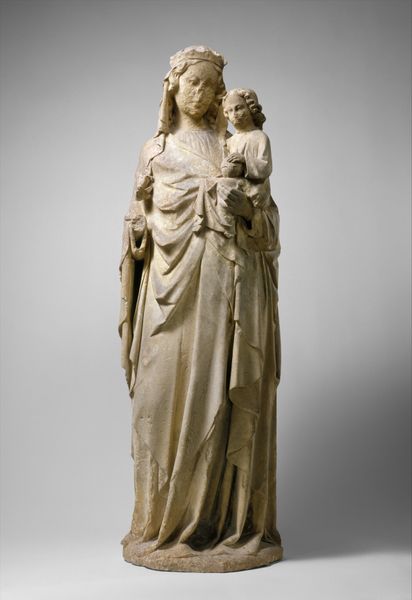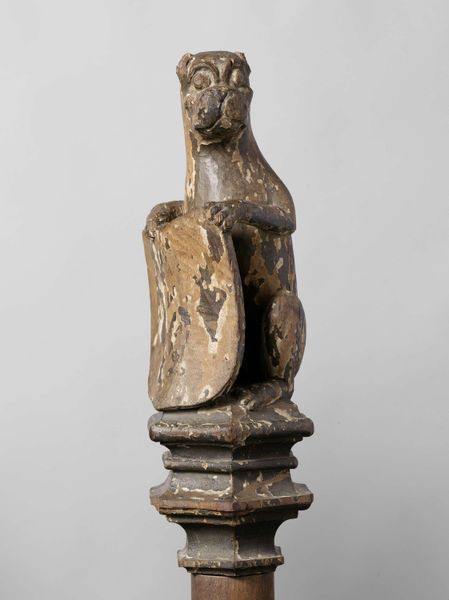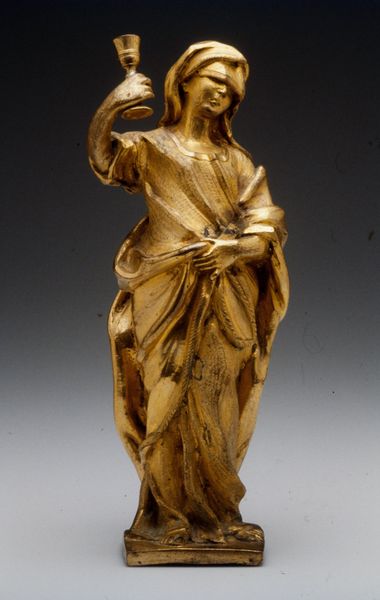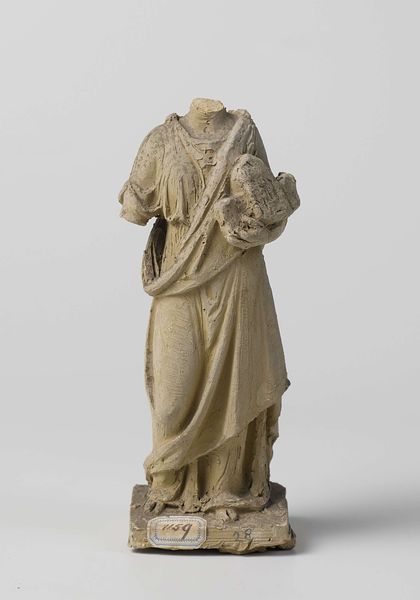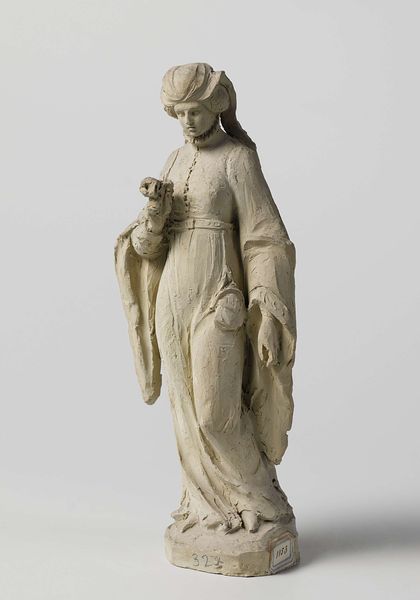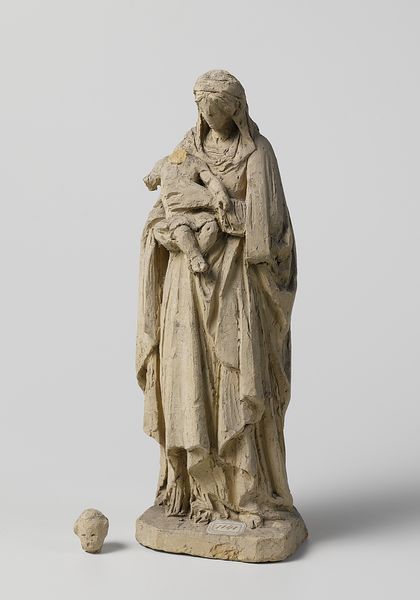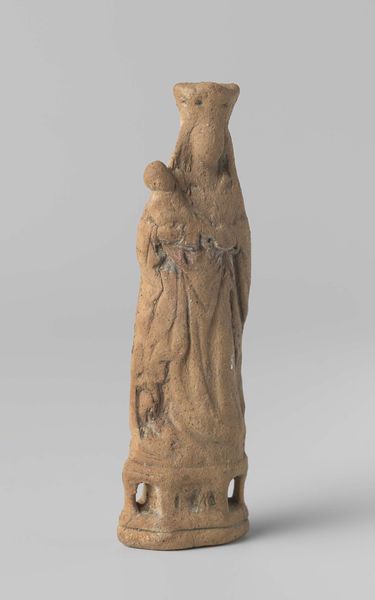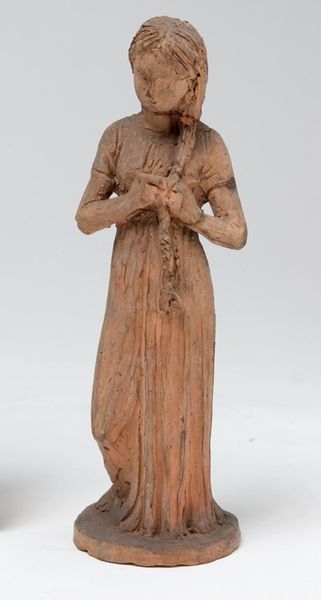
sculpture, wood
#
medieval
#
sculpture
#
figuration
#
sculpture
#
wood
Dimensions: height 80 cm, width 24 cm, depth 19 cm
Copyright: Rijks Museum: Open Domain
Editor: So, here we have "St Cunera," a wooden sculpture dating back to the early 16th century, currently residing at the Rijksmuseum, and created by an unknown artist. The texture really strikes me – you can see the marks of the carving so clearly. What elements stand out to you, looking at it from an art historical point of view? Curator: Focusing solely on its inherent properties, I see a clear articulation of form through line and volume. Note how the drapery isn’t just ornamental; it establishes a rhythm and a sense of contained movement within the static wooden form. Consider how the verticality is emphasized by the cascading folds, drawing the eye upwards. How does the material contribute to the sculpture's overall impact, would you say? Editor: Well, the roughness gives it an ancient, almost weathered feel. It definitely enhances the sense of age. Does the lack of detail in the face change its meaning for you? Curator: Precisely. It de-emphasizes individual identity in favour of universal qualities associated with St. Cunera. Notice the contrast between the smoother planes of the face and the rougher texture of the robes. This interplay highlights the form. We see intentional artistic decisions in this formal arrangement. How do these formal choices affect your interpretation of her? Editor: I hadn't thought about the contrast intentionally emphasizing her virtues over just the visual aspect of her identity! The formal qualities amplify the message. Thanks! Curator: Indeed, a deeper understanding comes with understanding the artistic arrangement, not just the historical narrative.
Comments
No comments
Be the first to comment and join the conversation on the ultimate creative platform.

